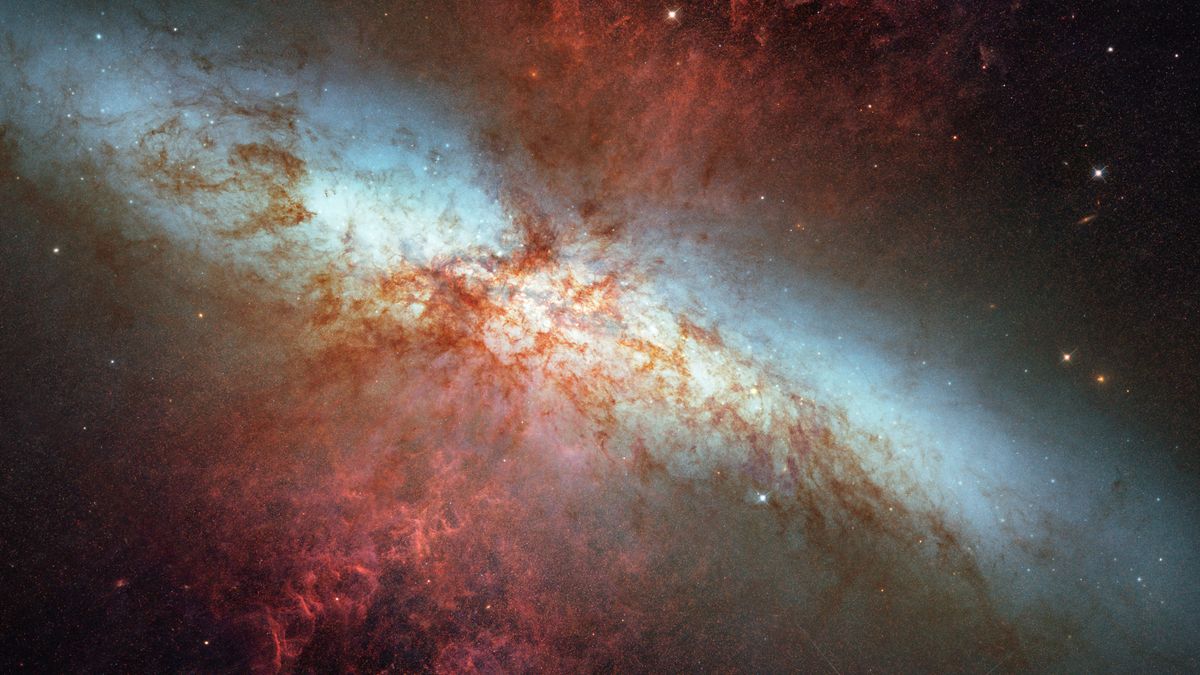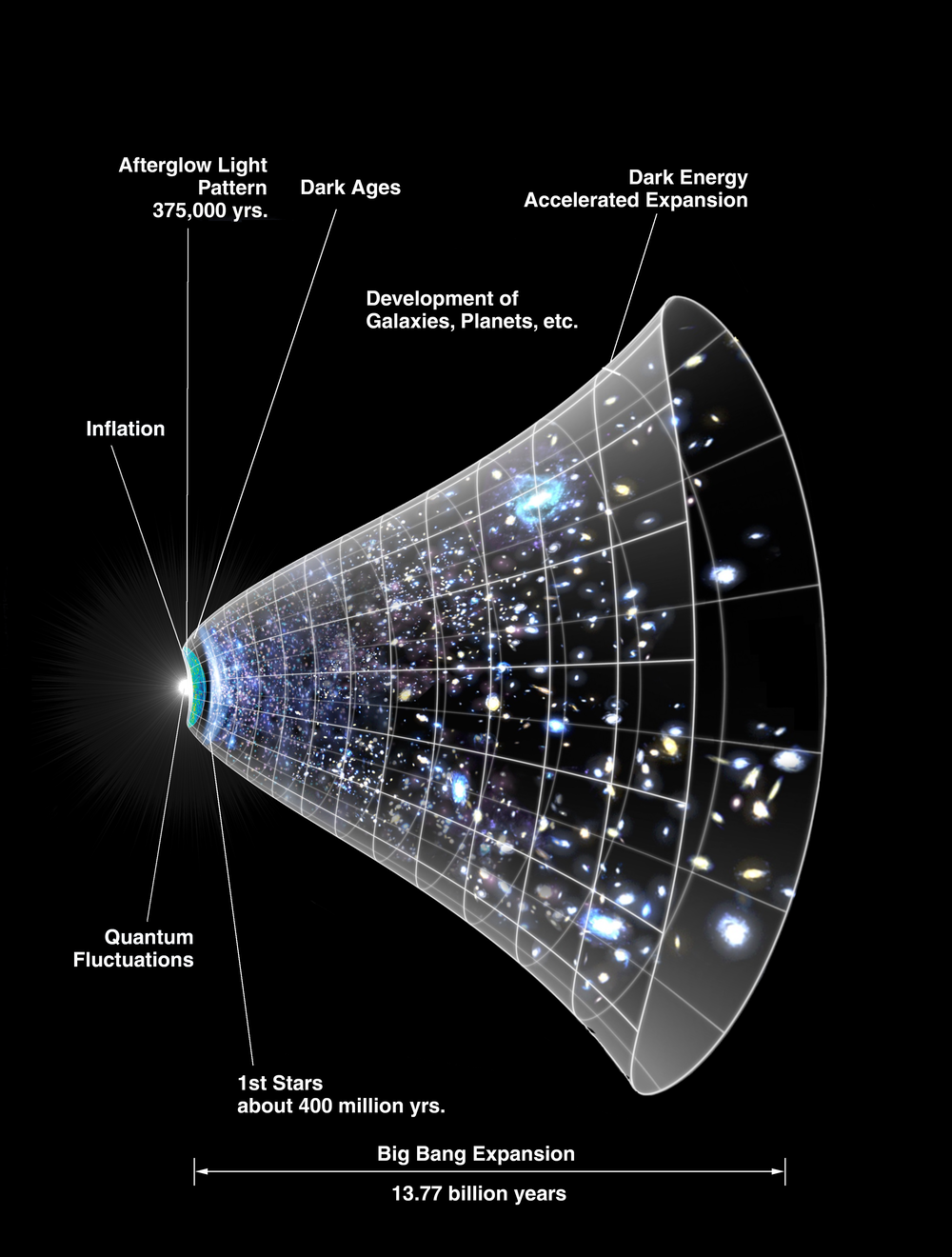Mysterious 'unparticles' may be pushing the universe apart, new theoretical study suggests
New theoretical research suggests that a mysterious form of matter called "unparticles" could be the driving force behind the expansion of the universe.

The ever-accelerating expansion of the universe may be driven by a mysterious form of matter called "unparticles," which do not obey the Standard Model of particle physics, a new theoretical paper suggests.
Scientists widely acknowledge that the universe is expanding, though the cause of that expansion remains elusive. One of the most popular proposed explanations is a mysterious entity called dark energy in the form of a cosmological constant, which leads to expansion at a rate independent of the age of the universe and the temperature of matter and radiation. However, recent astronomical observations challenge this hypothesis, prompting physicists to explore alternatives to what dark energy could be.
Now, in a new paper, researchers analyzed the idea that dark energy is instead made of a theoretical form of matter called unparticles. They found that this theory aligns better with observations than the prevalent standard cosmological model, which assumes a cosmological constant.
Related: James Webb Space Telescope complicates expanding universe paradox by checking Hubble's work
"Observationally, discrepancies arise in the values of the universe's expansion rate and the growth of large-scale structures [galaxies and galactic clusters] between measurements," study co-author Utkarsh Kumar, a cosmologist at Ariel University, told Live Science in an email. "Various observations, including Cosmic Microwave Background measurements, dimming of supernovae and many others, contribute to this tension."
Quantities such as the Hubble constant, which determines the rate of expansion, and the so-called S8, which contains information about the formation of large-scale structures, are not measured directly. Instead, they are calculated from observations of the cosmic microwave background (leftover radiation from the Big Bang) and distant stars and galaxies, using mathematical theories. However, different theories yield different values of these parameters from the same data, posing a huge tension in cosmology.
To address this problem, the authors of the new study, published in December 2023 in the Journal of Cosmology and Astroparticle Physics, suggest that the expansion of the universe is driven not by a cosmological constant but by unparticles, which had previously been considered in the context of particle physics.
Get the Space.com Newsletter
Breaking space news, the latest updates on rocket launches, skywatching events and more!
"The idea of unparticles was introduced by [theoretical physicist Howard] Georgi over a decade ago," lead study author Ido Ben-Dayan, also of Ariel University, told Live Science in an email. "In fundamental physics, we usually discuss fields, like the electric field, where particles are excitations of that field. In the electric field case, these are the photons," or packets of light. In almost all cases, Ben-Dayan added, particles are excitations with a well-defined mass and momentum.
However, "unparticles are the result of a set of fields that their excitations do not have a well-defined momentum and mass," Ben-Dayan said. "Thus, at the macroscopic level, they behave as a fluid. A special outcome of this property is that their equation of state, describing the ratio between the pressure they exert and their energy density, depends on temperature."
This equation of state strongly resembles the equation for the cosmological constant. Moreover, the very weak interaction of unparticles with “regular” matter, which is predicted by all theoretical models of the substance, makes it an excellent candidate for dark energy.

Unparticles untangled
In their work, Ben-Dayan and Kumar used the unparticle hypothesis instead of the cosmological constant and combined it with observational data collected from many experiments. They found that, unlike the values calculated using the standard cosmological model, the values of the Hubble constant and the S8 parameter deduced from these experiments were consistent with each other when they used the unparticle theory.
"Moreover, their model reduced the discrepancy between the measurements of the Hubble constant and S8, thus restoring the agreement between the different measurements, Kumar said.
For now, there is no empirical evidence to back up this theory. However, the authors are confident that, in the next decade or so, the accuracy of astronomical measurements will improve enough to determine whether the unparticle theory is correct.
"Our model is tested by constantly improving cosmological observations," Ben-Dayan said. "If it is correct, future Cosmic Microwave Background experiments should [confirm it]."
Experiments to measure the nature of dark energy are currently being developed, but will require telescopes to "probe further back in time" than they currently do, Ben-Dayan added.
Moreover, the physicists plan to increase the accuracy of their calculations and look for possible manifestations of unparticles in more familiar experiments with elementary particles in accelerators, which could be affected by the presence of unparticles.
"We plan to consider interactions between unparticles and the Standard Model of elementary particles," Kumar said. "This can further test our model. We will further study some extensions of our model and their cosmological consequences."
Join our Space Forums to keep talking space on the latest missions, night sky and more! And if you have a news tip, correction or comment, let us know at: community@space.com.

Andrey got his B.Sc. and M.Sc. degrees in elementary particle physics from Novosibirsk State University in Russia, and a Ph.D. in string theory from the Weizmann Institute of Science in Israel. He works as a science writer, specializing in physics, space, and technology. His articles have been published in Elements, N+1, and AdvancedScienceNews.
-
Unclear Engineer While this seems like the substitution of one fitting parameter for another, I think it is a potential step forward in that it tries to produce an equation of state for the new parameter, instead of just using a constant. That potentially allows for theoretical inferences that can be tested, so that an equation of state might be worked out from better data.Reply
It would not surprise me at all if the eventual result is that the expansion of the universe we observe today does not extrapolate back in time all the way to a single point.










